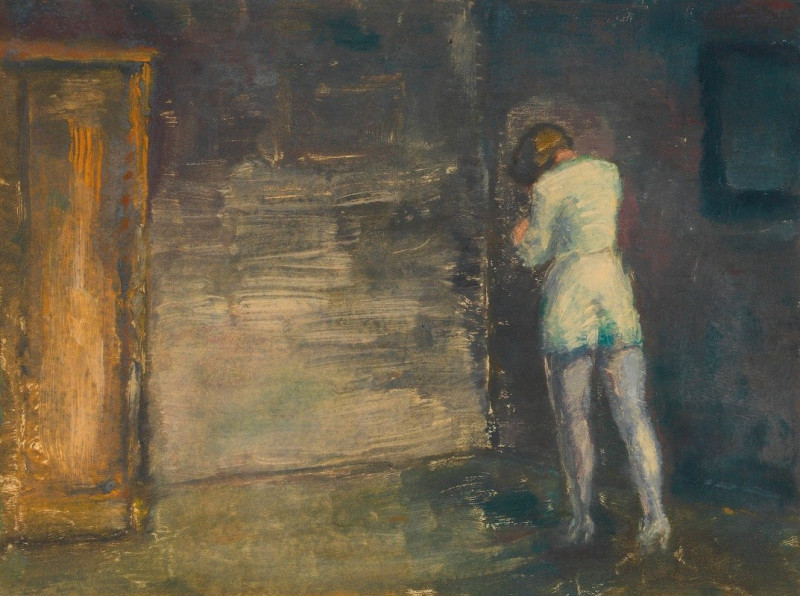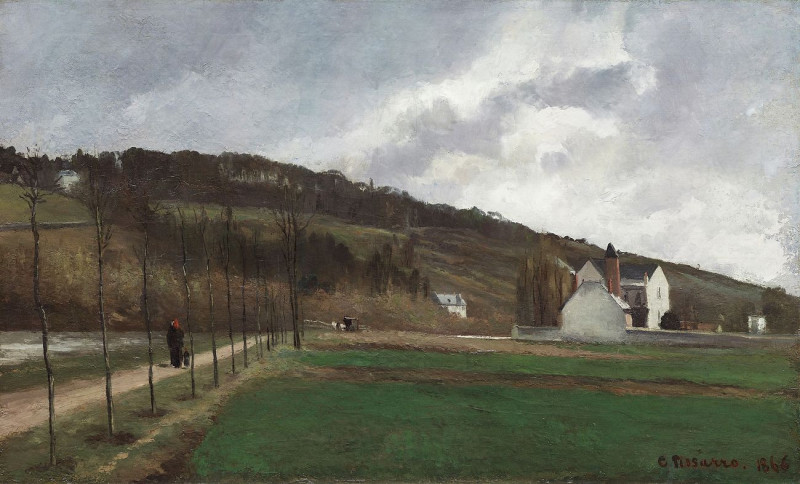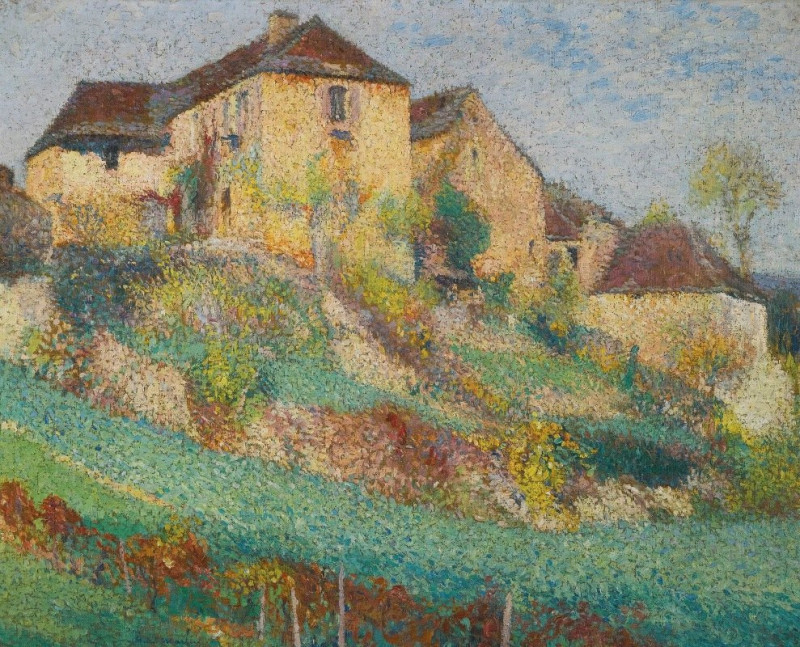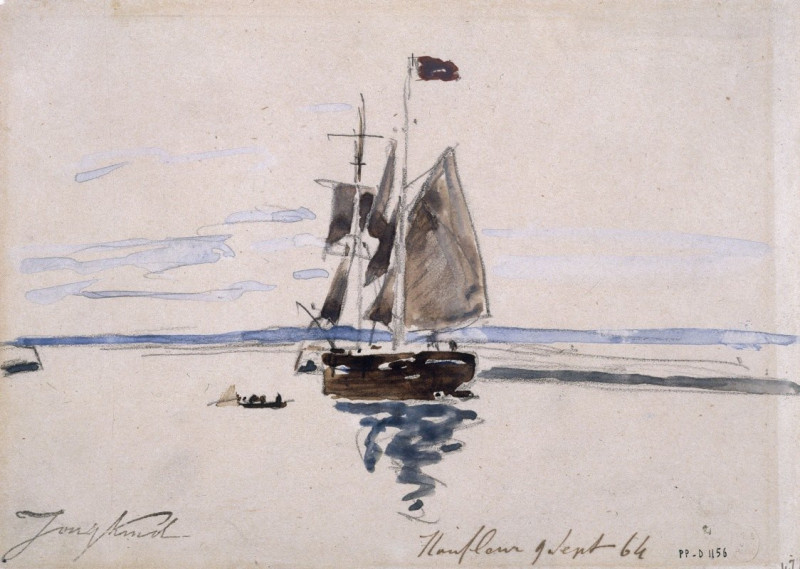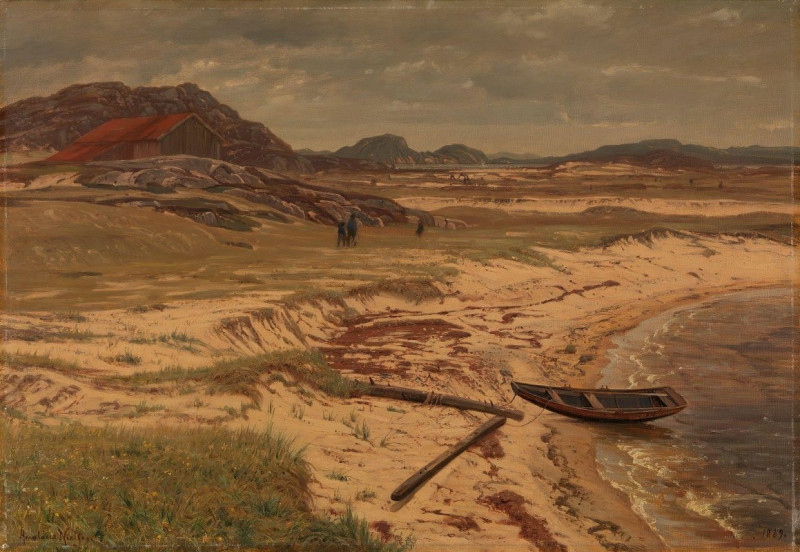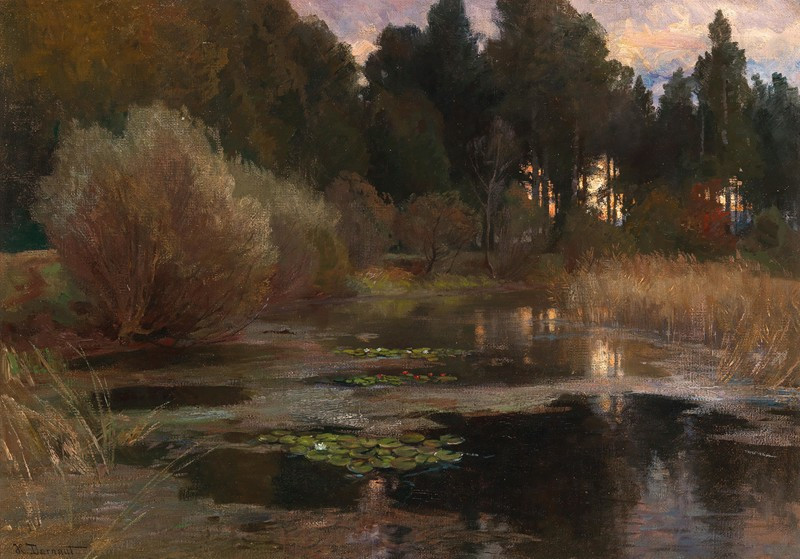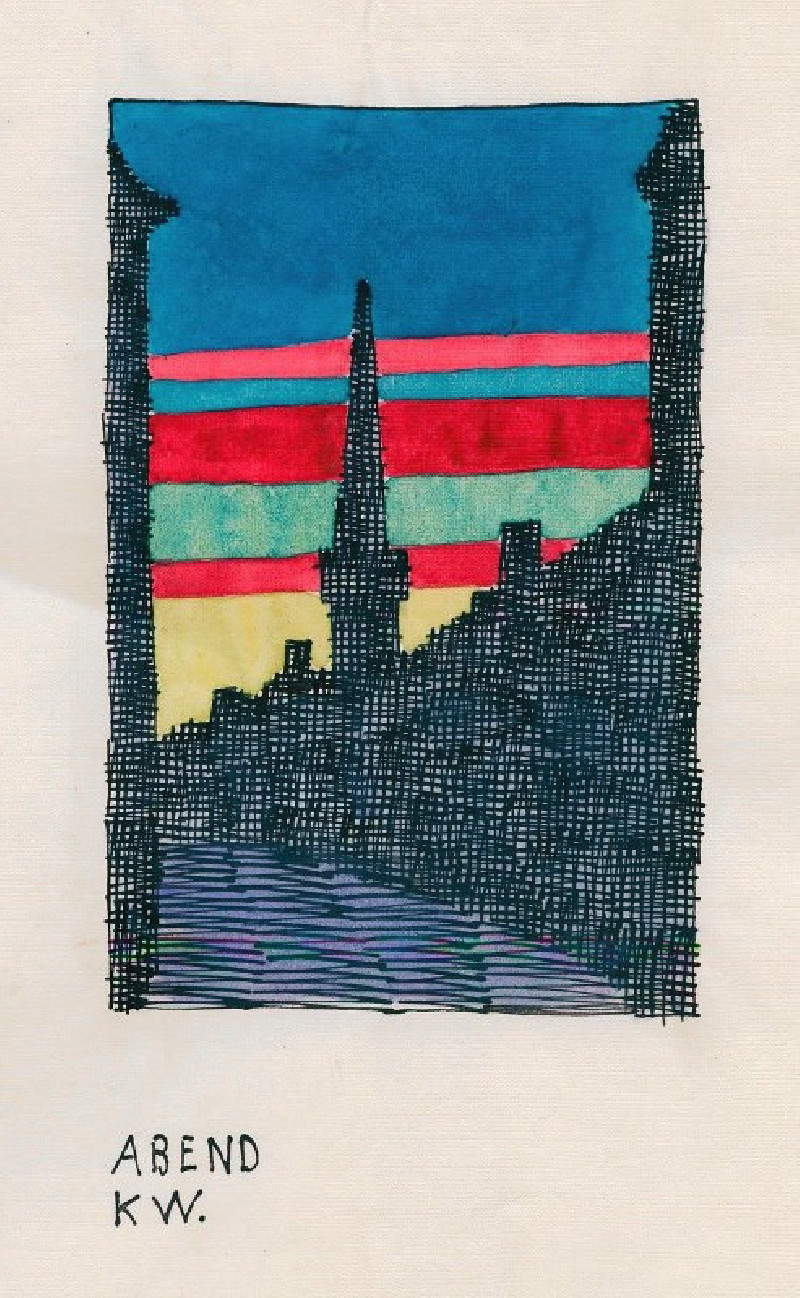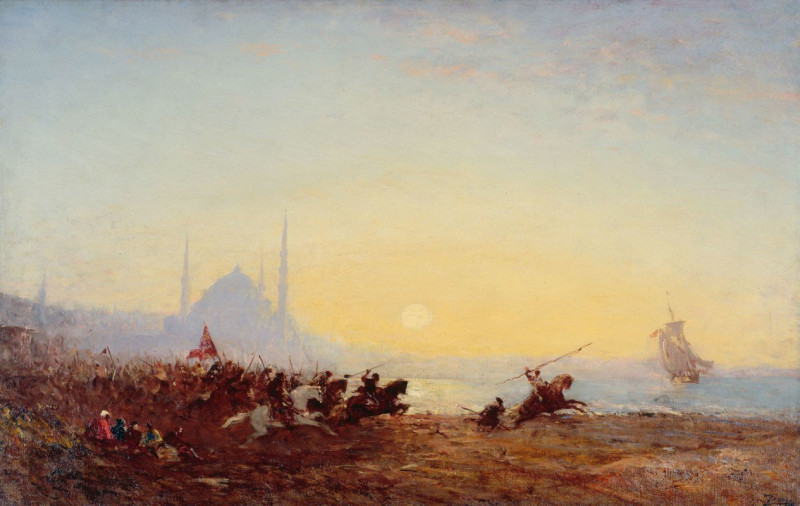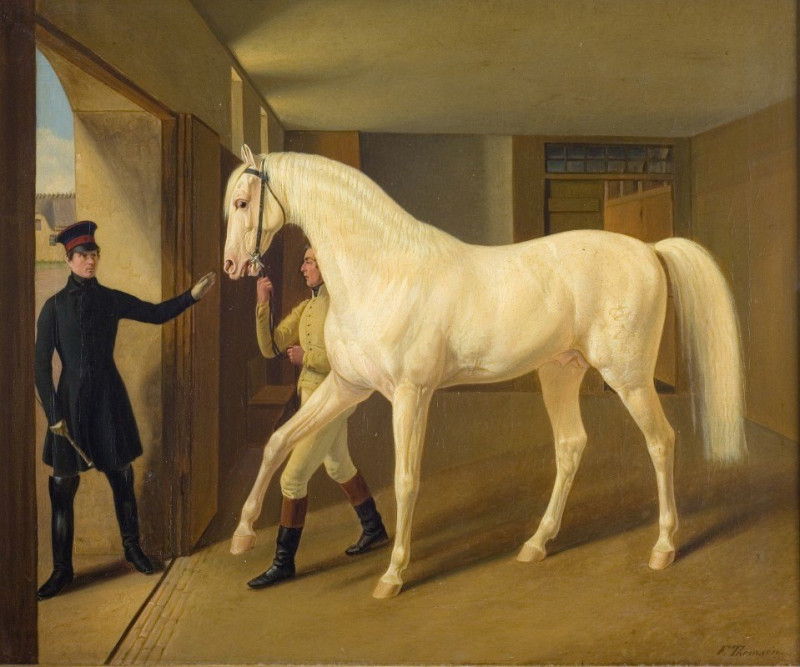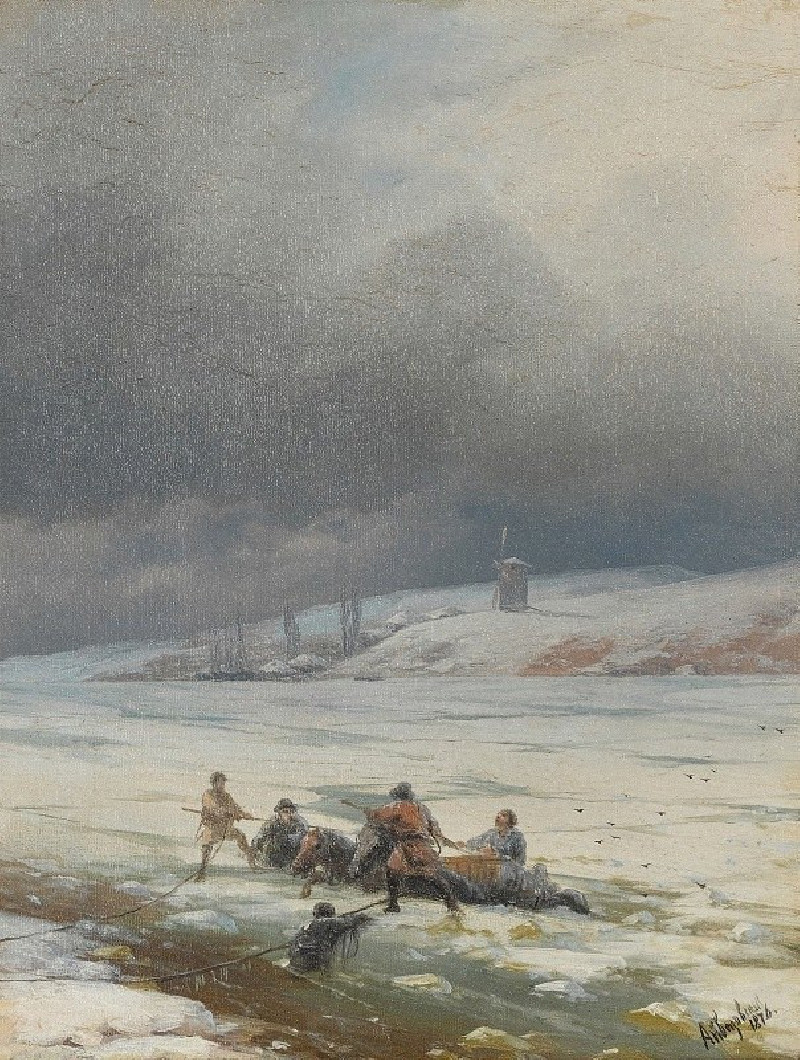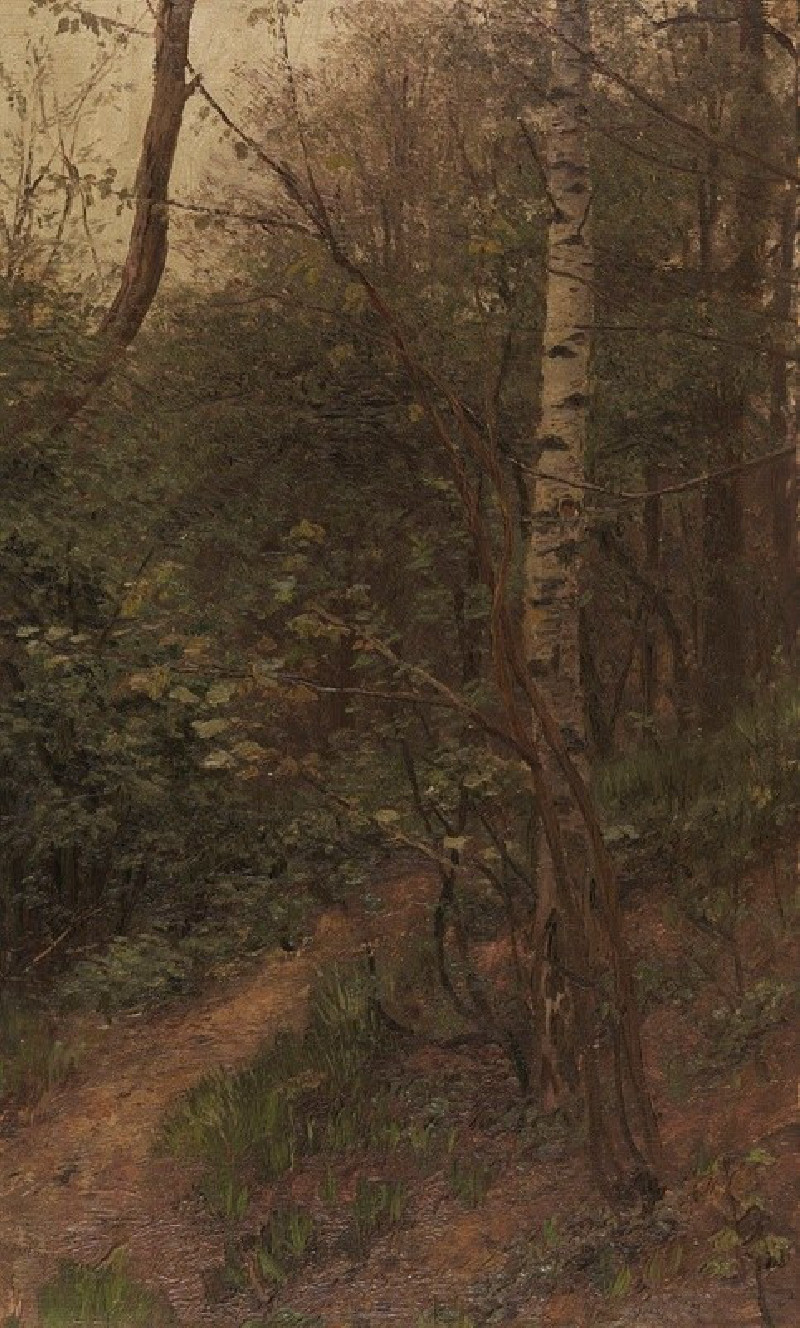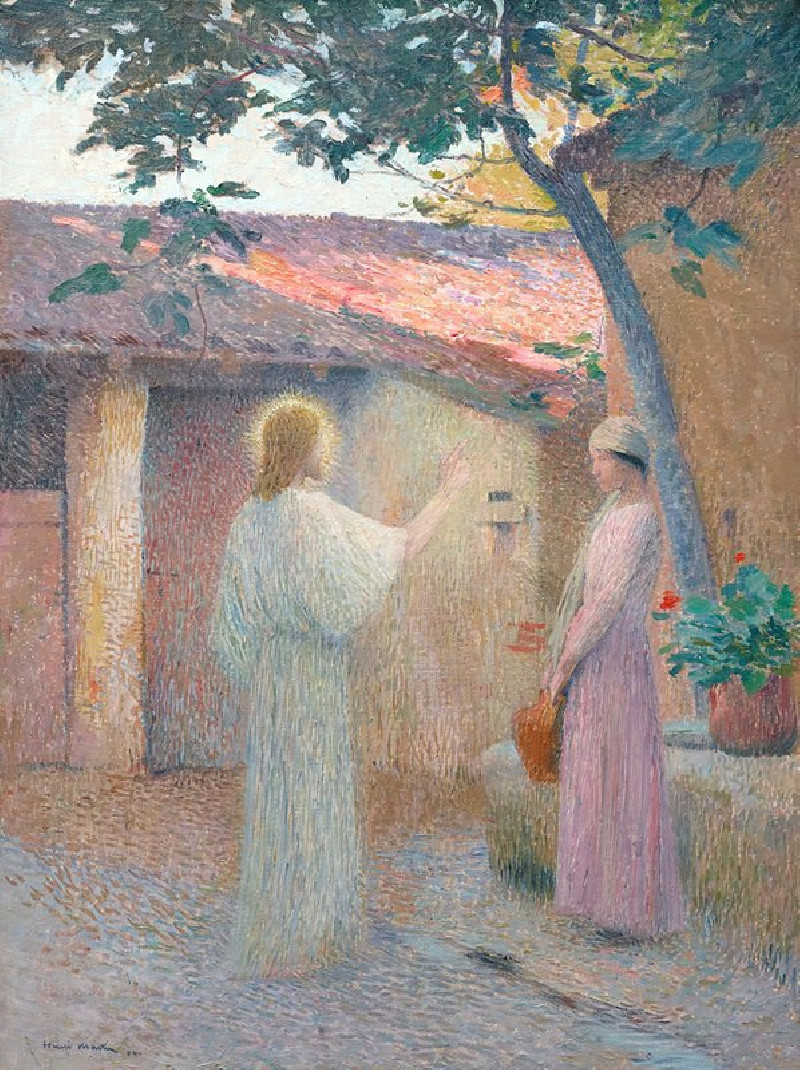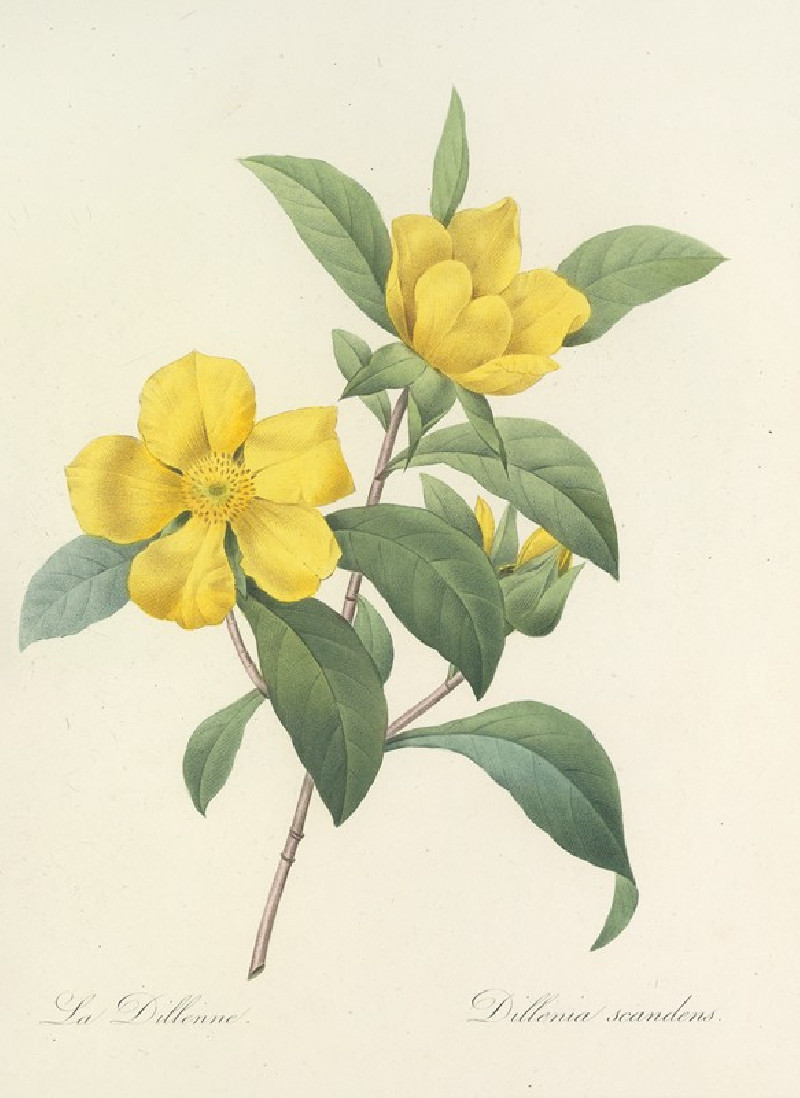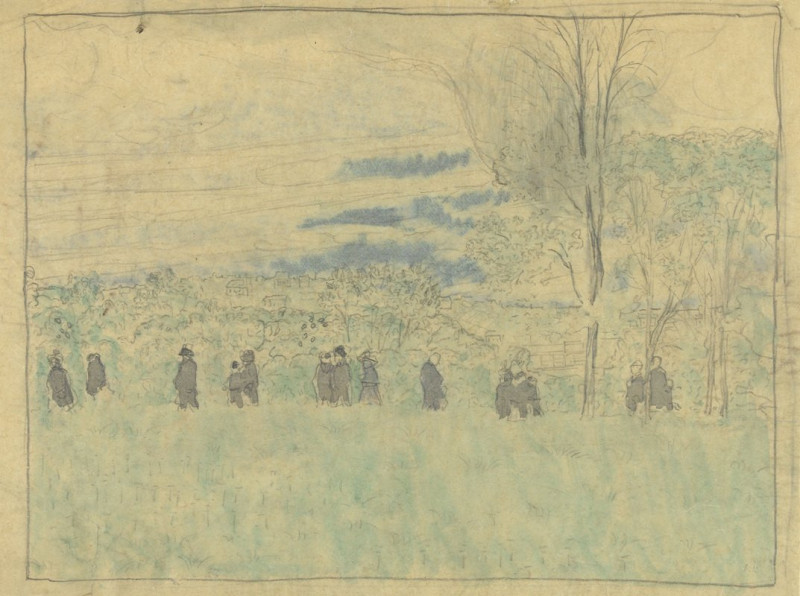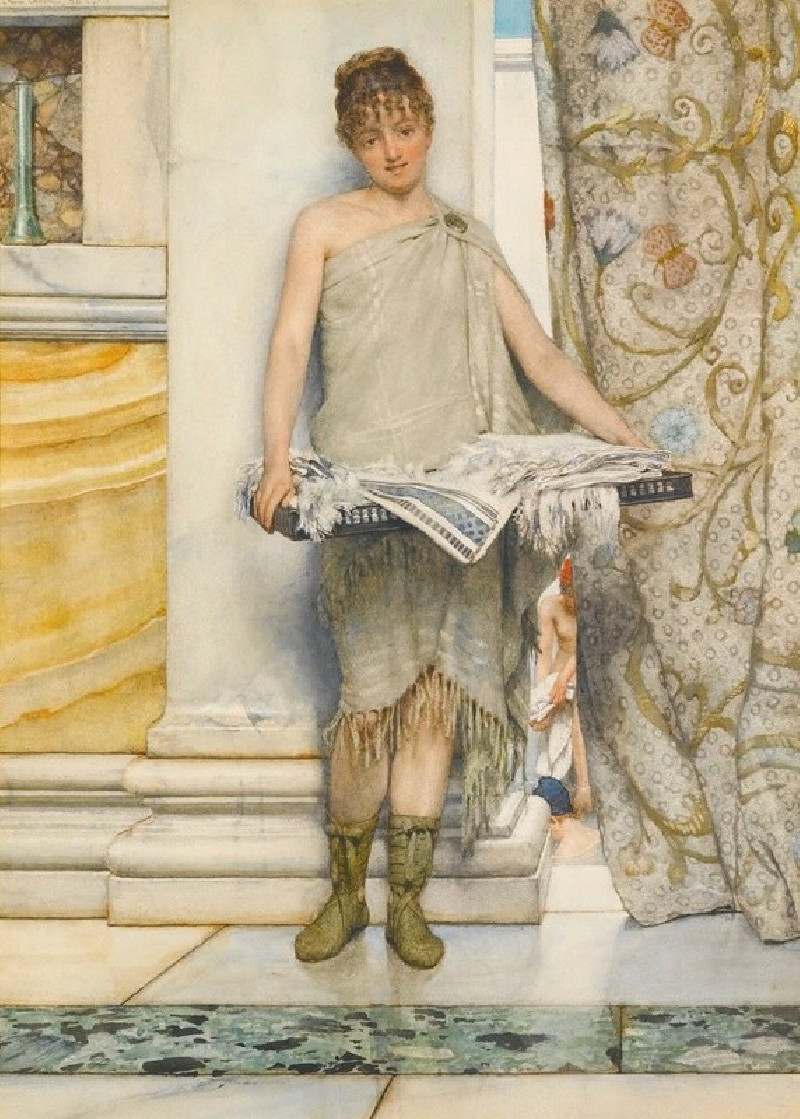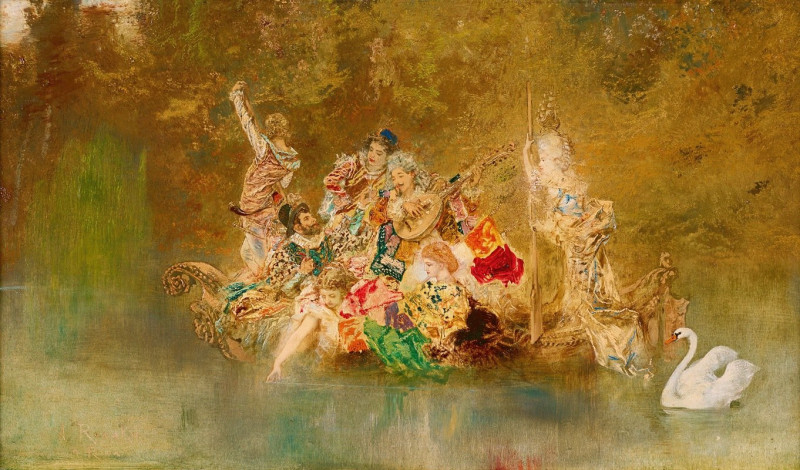Kummer (around 1930)
Technique: Giclée quality print
Recommended by our customers
More about this artwork
In the evocative painting titled "Kummer," created by Karl Wiener around 1930, viewers encounter a profound visual meditation on emotion. The artwork captures a solitary figure in a moment of distress or deep contemplation. Positioned in a dimly lit interior, the subject is leaning against what appears to be a doorway, with their back turned towards the viewer, thereby adding an aura of mystery and personal solitude.Wiener's mastery in using muted and dark color palettes evokes the painting's theme of sorrow effectively. The subtle interplay of shadows and light not only enhances the emotional depth of the scene but also reflects the complexity of human emotions. The rough, textured brushstrokes contribute to the overall somber and tactile feeling of the painting, inviting the viewer to feel the weight of the unnamed figure's emotional state."Kummer" transcends its immediate visual boundaries by engaging with themes of human vulnerability and introspection. As we gaze upon the figure, paused in their moment of sorrow, we are reminded of the universal experience of facing our innermost feelings.

